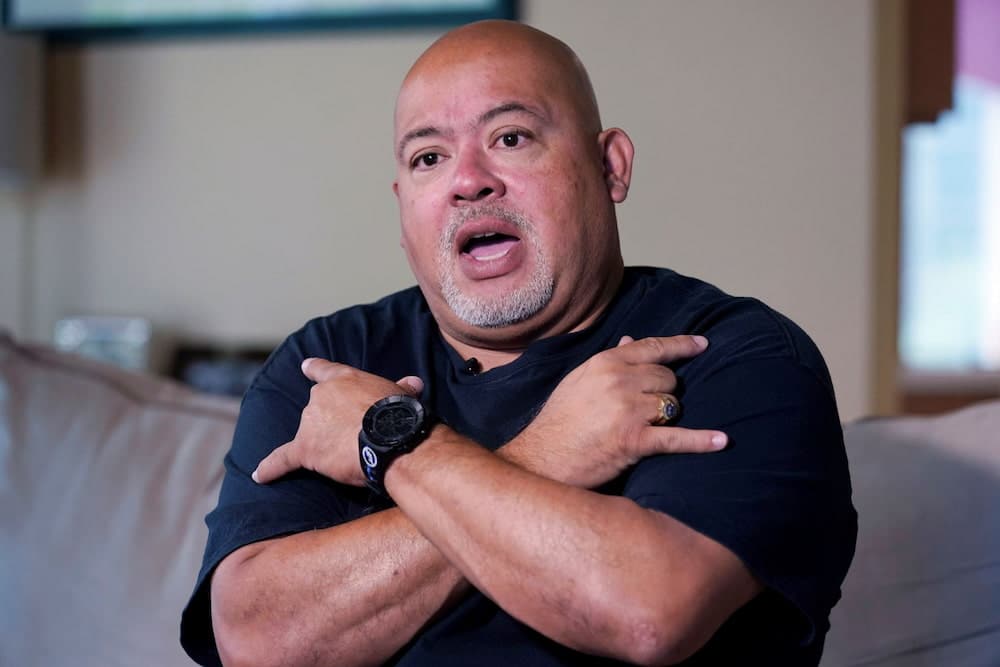Trapped deep in the wreckage of the World Trade Centre, Will Jimeno lived through the unthinkable. Twenty years later, he’s still living with it.
The injuries ended his police career. He has post-traumatic stress disorder. He keeps shelves of mementoes, including a cross and miniature twin towers fashioned from trade centre steel. He was portrayed in a movie and wrote two books about enduring the ordeal.
“It never goes away, for those of us that were there that day,” he says.
Nearly 3000 people were killed when hijackers in Osama bin Laden’s al-Qaeda terror network rammed four commercial jets into the trade centre, the Pentagon and a Pennsylvania field on September 11, 2001. Yet an estimated 33,000 or more people successfully evacuated the stricken buildings.
The survivors grapple with their place in a tragedy defined by an enormous loss of life. But they also say they have gained resilience, purpose, appreciation and resolve.
Desiree Bouchat pauses by one of the inscribed names on the 9/11 memorial: James Patrick Berger. She last saw him on the 101st floor of the south tower.
“Some days, it feels like it happened yesterday,” she says.
At first, people figured the plane crash at the north tower was accidental. There was no immediate evacuation order for the south tower. But Berger ushered Bouchat and other Aon Corp. colleagues to the elevators, then turned back to check for more people.
Just as Bouchat exited the south tower, another plane slammed into it. Nearly 180 Aon workers perished, including Berger.
For a while, Bouchat told everyone, including herself: “I’m fine. I’m alive.”
But “I was a walking zombie,” she says now.
She couldn’t multitask anymore. Remarks that used to bother her stirred no reaction. She was functioning, but through a fog that took more than a year to lift.
Bouchat eventually felt she needed to talk about 9/11. The Springfield, New Jersey, resident now leads tours for the 9/11 Tribute Museum.
For a time after 9/11, Police Department Officer Mark DeMarco replayed the what-ifs in his mind. If he’d gone right instead of left. A bit earlier. Or later.
“I couldn’t figure out how I got out of there alive,” he says.
After helping evacuate the north tower, the Emergency Service Unit officer was surrounded by a maze of debris when parts of the skyscraper tumbled onto a smaller building where he’d been directed. Some officers with him were killed.
As he inched his way out in darkness with two other officers, DeMarco nearly tumbled into a crater carved by the collapse.
Now 68 and retired, DeMarco still wears a wristband with the names of the 14 ESU members killed that day. He worries that the public memory of the attacks is fading. “Have fun with life. Don’t be afraid,” he says. “But be mindful.”
Breathing through an oxygen mask in a hospital bed, Wendy Lanski told herself: “If Osama bin Laden didn’t kill me, I’m not dying of COVID.”
On 9/11 the health insurance manager escaped the north tower’s 29th floor and ran, barefoot, through the dust cloud from the south tower’s collapse. Eleven of her Empire Blue Cross Blue Shield colleagues died.
“The only good thing about surviving a tragedy or a catastrophe of any kind is: It definitely makes you more resilient,” says Lanski, who was hospitalised with the coronavirus – as was her husband – for two weeks in spring 2020.
But “surviving is only the first piece of the journey,” says Lanski, 51, of West Orange, New Jersey.
She has asked herself: “Why am I here and 3000 people are not?” Over time, she accepted not knowing.
“But while I’m here, I’ve got to make it count,” says Lanski, who has spoken at schools and travelled to conferences about terror victims. “I’ve got to make up for 3000 people who lost their voice.”
Buried in darkness and six metres or more of rubble from both towers, Will Jimeno was ready to die.
The Port Authority of New York and New Jersey Police Department rookie was in searing pain from a fallen wall pinning his left side. Fellow officer Dominick Pezzulo had died next to him.
He had yelled for help for hours and was terribly thirsty. Then Jimeno, who is Catholic, had what he describes as a vision of a robed man walking toward him, a bottle of water in his hand. We’re going to get out, he told Sergeant John McLoughlin, who was trapped with him.
It was hours – of pushing back pain, thinking of rescues in past disasters, talking to keep alert – before they were found and gruelingly extricated by former US Marines, NYPD officers, a onetime paramedic and firefighters as blazes flared and debris shifted and fell.
“If you wanted to picture what hell looked like, this was probably it,” recalls then-NYPD Officer Ken Winkler.
Jimeno was freed around 11pm, McLoughlin the next morning. Jimeno underwent surgeries and lengthy rehabilitation.
But he says his psychological recovery was harder.
It has helped to tell his story in talks, in the 2006 Oliver Stone movie “World Trade Centre,” and in Jimeno’s two newly released books.
The Colombian-born US Navy veteran hopes that people see in his story “the resiliency of the human soul, the American spirit,” and the power of good people stepping up in bad times.
Says Jimeno, 53, of Chester, New Jersey: “The way I can honour those we lost and those that were injured is to live a fruitful life.”
AAP
Get all the latest Canberra news, sport, entertainment, lifestyle, competitions and more delivered straight to your inbox with the Canberra Daily Daily Newsletter. Sign up here.



